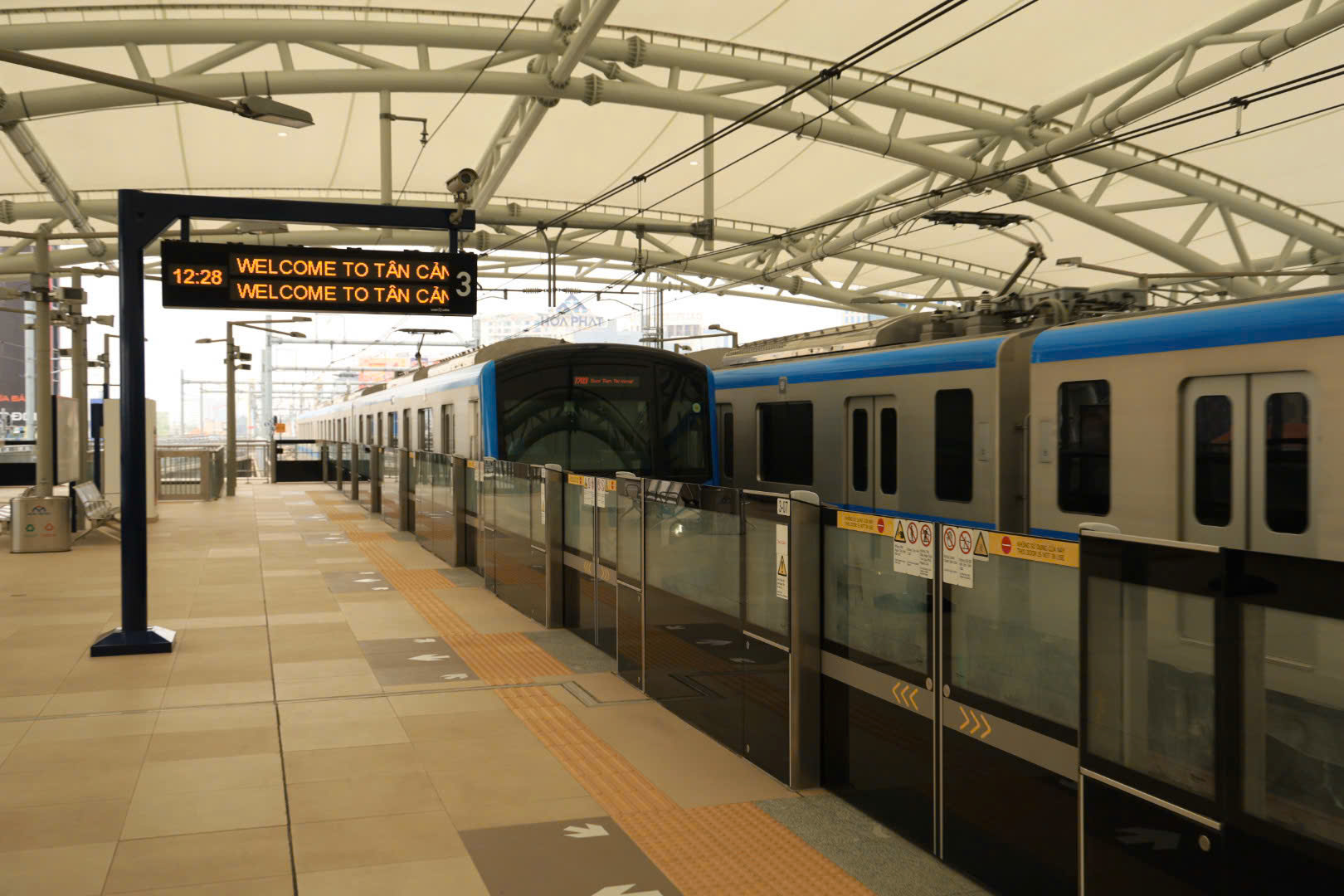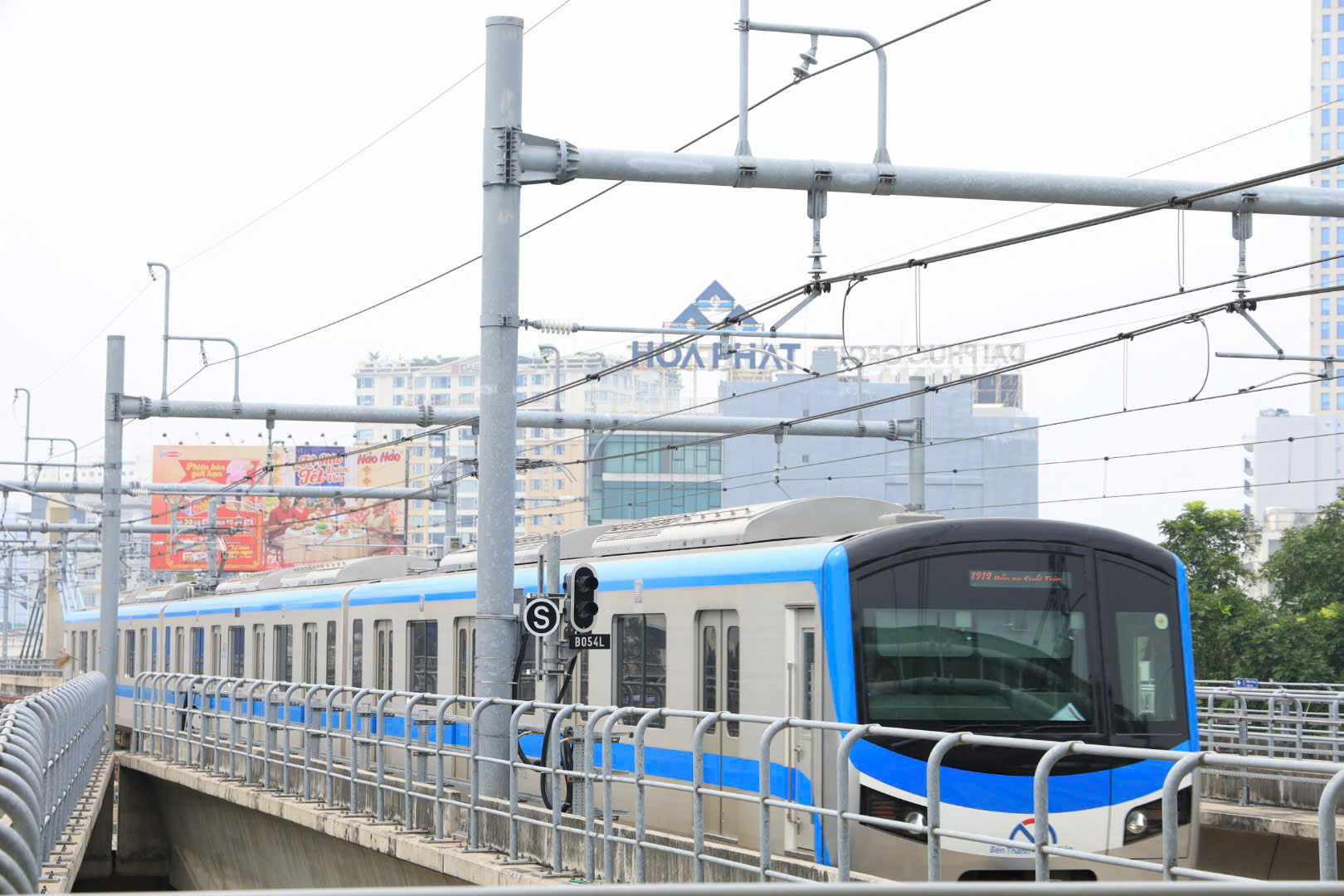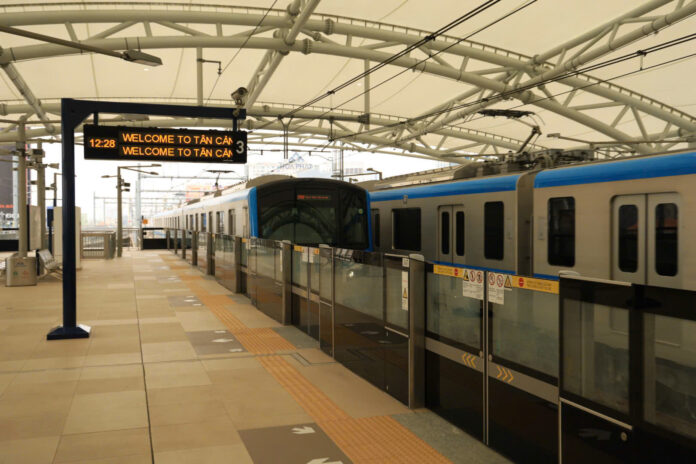Unlocking HCM City’s Transport Future: Expert Insights on Resolving Challenges
On May 28th, the Ho Chi Minh City Institute for Development Studies hosted a scientific seminar to discuss the implementation of Resolution No. 188/2025 passed by the National Assembly. The seminar was moderated by Mr. Vu Chi Kien, Vice President of the Institute, and included the participation of leading experts, leaders from various departments, and representatives from international organizations.

Implementing 355 km of metro in Ho Chi Minh City is an unprecedented challenge.
Pressing Onward
Dr. Tran Du Lich, Chairman of the Advisory Council for the Implementation of Resolution 98/2023, emphasized that implementing 355 km of urban railway in Ho Chi Minh City by 2035 is an unprecedented challenge.
Resolution 188 grants Ho Chi Minh City five groups of special mechanisms, with the first being the decentralization of capital mobilization and allocation. The central government plans to support with approximately $8 billion, while the city must self-mobilize the remaining funds through various means.
“This is a significant issue that cannot be approached with traditional methods. The entire investment process and procedures must be streamlined and shortened according to the Transit-Oriented Development (TOD) model. The powerful mechanism of decentralization granted to the city will serve as a lever to achieve this,” said Dr. Tran Du Lich.
The resolution also stipulates that Ho Chi Minh City has the authority to choose technology, preferential policies, and organize and assign tasks to individuals and organizations participating in the investment and development of the urban railway. The fifth policy group also addresses the selection of building materials and waste treatment, long-standing bottlenecks.
Notably, Article 9 allows all land use fees from TOD areas to be reinvested in metro projects. According to Dr. Tran Du Lich, to complete the 355 km within ten years, the city must finish approximately 35 km of urban railway annually. “There is no turning back. However, we must identify challenges to find solutions. In addition to the new mechanisms provided by Resolution 188, the city must also change its approach, management methods, and implementation mindset,” he emphasized.
The second issue pertains to procedures. Ho Chi Minh City needs to closely link the planning of each metro line with the TOD model and efficiently utilize domestic and international consulting services to shorten the time frame.
The third issue is the practical application of TOD. This model cannot be implemented everywhere and must be adapted to the specific conditions of each area.
The fourth challenge lies in technology and human resources. Dr. Tran Du Lich suggested that the city should master technology, develop the railway industry, and train a synchronized workforce to ensure effective operation.
Lastly, regarding finances, he raised the question of whether to rely solely on public investment or to involve the private sector, and how to structure the finances when the National Assembly allows the city to retain 20% of its budget…

With the merger, Ho Chi Minh City will have 20 urban railway lines, including extensions to Ba Ria-Vung Tau and Binh Duong provinces.
TOD – The Key to Reorienting Planning and Attracting Private Capital
Mr. Ho Ngoc Nghia, Deputy Head of the Urban Railway Management Division of the Department of Construction, shared that Ho Chi Minh City will standardize metro technology with Hanoi, adopting a 1,435 mm track gauge, double tracks, a design speed of 80-160 km/hour, an axle load of 14-17 tons/axle, electrification through an overhead system or a third rail, automatic control via the CBTC system, and the use of distributed-drive trains (EMU).
Following the merger, Ho Chi Minh City will have 20 urban railway lines, including extensions to Ba Ria-Vung Tau and Binh Duong provinces. The National Assembly has allocated approximately $4.34 billion in investment funds for the city. The city is currently working on land clearance to be completed by 2028, with simultaneous construction commencing in 2029. The construction of metro line 2 will begin in 2025. The city will also explore the model of an investment corporation in the spirit of Resolution 68/2025 of the Politburo on private economic development.
Dr. Nguyen Lam, a specialist from the Department of Synthesis and Application of Digital Technology at the Department of Construction, shared that TOD will encompass approximately 7,397 hectares of land, playing a pivotal role in capital mobilization. According to Prof. Dr. Nguyen Duc Khuong, Chairman of the Association of Vietnamese Scientists and Experts (AVSE Global), TOD enables flexible financial mobilization and efficient exploitation of urban, commercial, and logistics spaces around metro lines. However, an appraisal council is necessary to select the optimal investment option and prevent increases in public debt.
Dr. Tran Du Lich asserted that if TOD is well-managed, the metro lines can attract private investment. With just 46 TOD areas, each square meter of land generating $1,000, the total resources would amount to approximately VND 740 trillion – sufficient for reinvesting in the metro system and re-planning the entire urban area of Ho Chi Minh City.
Dr. Architect Ngo Viet Nam Son remarked that Metro Line 1 was not designed according to the TOD model, and if the station had been located directly below Vinhomes as per the TOD concept, its efficiency would have been maximized. He suggested that the remaining metro lines be reviewed according to the TOD orientation. He proposed that metro planning and TOD planning should be carried out simultaneously, especially with the city’s merger with Binh Duong and Ba Ria-Vung Tau provinces.
Associate Professor Dr. Vu Anh Tuan, Director of the Center for Transport Research at the Vietnam-Germany University, affirmed that TOD is mandatory for sustainable urban development. He suggested that when planning metro lines, the surrounding urban areas should also be planned concurrently. He also recommended establishing an inter-sectoral appraisal council for TOD, chaired by the Chairman or Vice Chairman of the People’s Committee. On-site resettlement should be implemented to avoid social backlash.
Prof. Dr. Nguyen Trong Hoai, former Vice Principal of the University of Economics Ho Chi Minh City, affirmed that Resolution 188 creates a very progressive policy framework. However, without financial solutions and scientific approaches, it will be challenging for Ho Chi Minh City to achieve the goal of 355 km of urban railways within ten years.
A Timely Warning: Flagging Financial Distress in State-Owned Enterprises
“The Prime Minister directs the Ministry of Finance to rigorously assess the performance of state-owned enterprises, promptly identifying and flagging those exhibiting signs of financial distress. This proactive measure underscores the government’s commitment to fostering a robust and stable business sector, where transparency and fiscal responsibility are paramount.”
High-Speed Rail Project: A Level Playing Field for Private Enterprises
According to numerous experts, private enterprises’ bold initiative to venture into high-speed rail development is a welcome and positive sign. However, it is crucial to proceed with caution as not all businesses may possess the requisite capabilities and resources to undertake such an endeavor successfully.





















